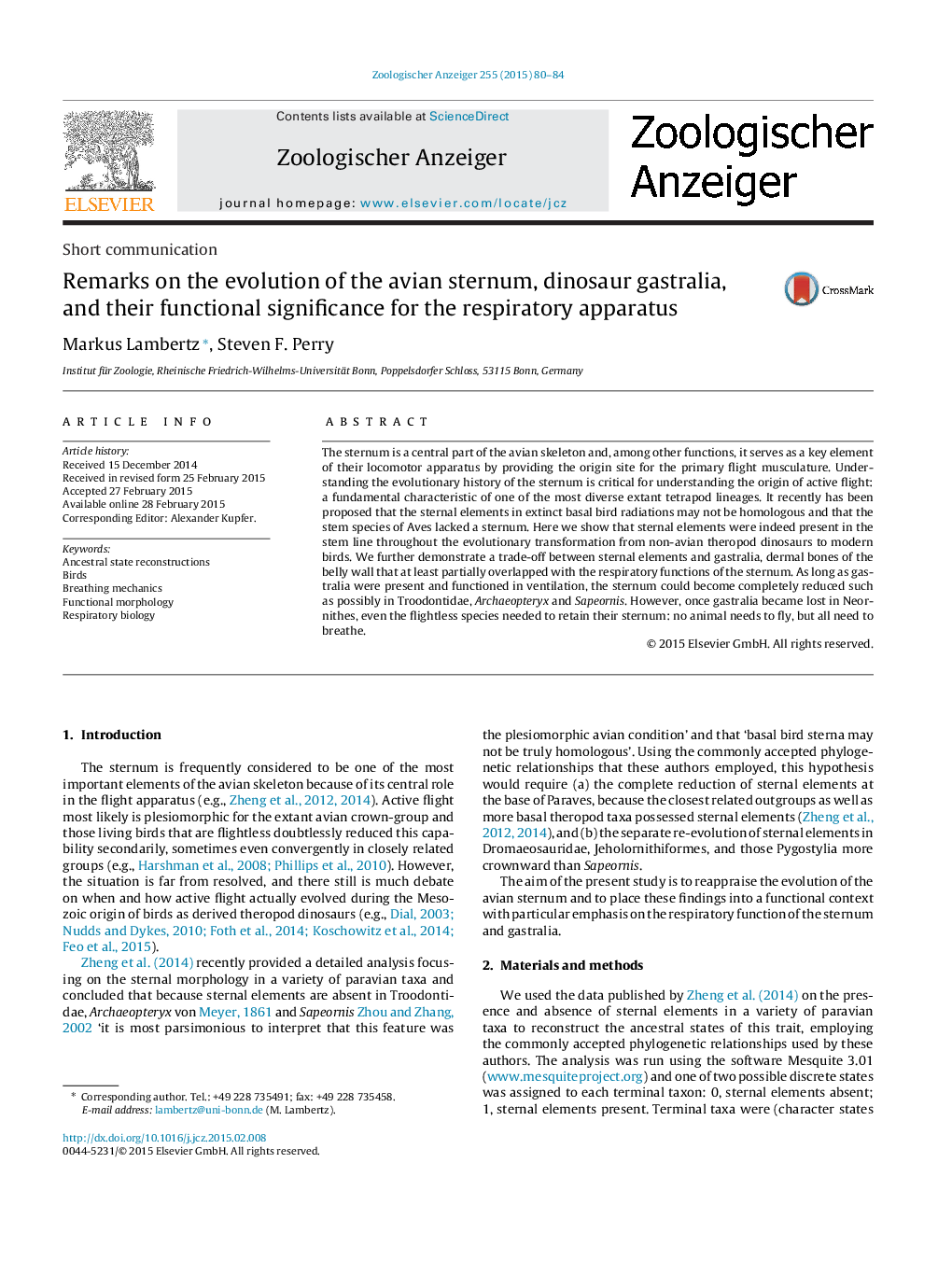| کد مقاله | کد نشریه | سال انتشار | مقاله انگلیسی | نسخه تمام متن |
|---|---|---|---|---|
| 2790602 | 1568620 | 2015 | 5 صفحه PDF | دانلود رایگان |
The sternum is a central part of the avian skeleton and, among other functions, it serves as a key element of their locomotor apparatus by providing the origin site for the primary flight musculature. Understanding the evolutionary history of the sternum is critical for understanding the origin of active flight: a fundamental characteristic of one of the most diverse extant tetrapod lineages. It recently has been proposed that the sternal elements in extinct basal bird radiations may not be homologous and that the stem species of Aves lacked a sternum. Here we show that sternal elements were indeed present in the stem line throughout the evolutionary transformation from non-avian theropod dinosaurs to modern birds. We further demonstrate a trade-off between sternal elements and gastralia, dermal bones of the belly wall that at least partially overlapped with the respiratory functions of the sternum. As long as gastralia were present and functioned in ventilation, the sternum could become completely reduced such as possibly in Troodontidae, Archaeopteryx and Sapeornis. However, once gastralia became lost in Neornithes, even the flightless species needed to retain their sternum: no animal needs to fly, but all need to breathe.
Journal: Zoologischer Anzeiger - A Journal of Comparative Zoology - Volume 255, March 2015, Pages 80–84
